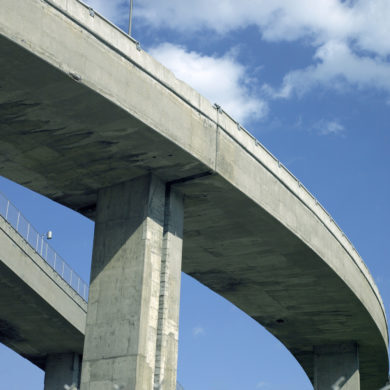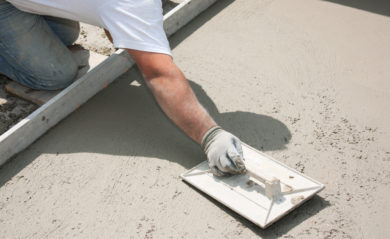For generations, concrete has been one of the most popular building materials around the globe. From the construction of roads and infrastructures to foundations and engineering projects, the familiar mixture of water, cement, and sand is utilized daily thanks to its easy-to-use properties and its common and affordable composite ingredients. Of course, no matter how sturdy it’s built to be, the most popular building material in the world still has unavoidable enemies – time and mother nature.
But, thanks to one microbiologist by the name of Henk Jonkers, a new kind of concrete might just prove itself immune to decay. Meet bio-concrete, the structure of the future.
The Achilles Heel of Concrete
By and large, concrete is an extremely sturdy building material. When constructed correctly and in the right conditions, concrete structures can easily last 50 to 100 or more years!
However, in most cases time, wind, rain, and shifts in the earth’s crust can start to form cracks in concrete. These cracks allow debris and water to creep inside the concrete where moisture can slowly eat away at the steel rebar materials that reinforce almost every concrete structure in the world. As the steel succumbs to this process of wear and tear, the once-strong concrete structure continues to crack further and eventually crumble.
How Bio-Concrete Fixes the Problem
In early 2016, microbiologist Henk Jonkers from Delft University in the Netherlands came up with the solution of a self-healing concrete product by exploiting the healing properties of nature. Mixing a new type of bacteria and calcium lactate capsules into the initial concrete mixture, Jonkers created a type of concrete that can actually rebuild itself as moisture enters the inevitable cracks, gaps, and holes, a form of self-maintenance.
When water begins to work its way into a concrete structure, the moisture disintegrates the biodegradable plastic shell of the calcium lactate. The calcium lactate then awakens the bacteria which consumes the calcium lactate creating limestone. As this bacterial process occurs, the limestone expands to fill in the cracks created by the water and therefore rebuilds the structure from the inside out, completely sealing the initial point where the crack began. This variant of concrete is perfect for the type of building that is subject to weathering, as well as areas that are difficult to access for repair workers. This eliminates the need for future expensive and complex repairs.
An End to Costly Maintenance
When used in the construction of bridges, tunnels, and roads, bioconcrete has the potential to save billions on annual maintenance fees. At the moment, Jonkers is working to reduce the cost of the material for use in large-scale projects. Currently a cubic meter of bio-concrete costs about 200 Euros or approximately 239 US Dollars. Jonkers is hoping that his new method of encapsulating the bacteria and calcium lactate will reduce the cost of bioconcrete by as much as 50 percent, making the substance only slightly more expensive than traditional concrete.
Creating a Brighter Future
At General Kinematics, we’re thrilled to watch the progress of this incredible innovation. The only way to continue improving is to keep finding new and creative ways to innovate. That’s why we take immense pride in creating products like our LOCK-TITE™ Rotary Drum Liners that are designed to promote a safer workplace, increase production, and help our clients take new strides in their business. To learn more about GK products or services, contact us today!








